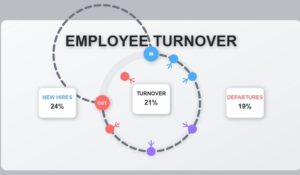Internal communication shapes every aspect of your organization. When done right, communication dos and don’ts create harmony, productivity, and employee satisfaction. However, when neglected, they lead to confusion, frustration, and high turnover rates.
The modern workplace demands clear, consistent internal messaging. Therefore, understanding communication dos and don’ts isn’t just helpful—it’s essential for survival. Additionally, organizations that implement these principles see measurable improvements in team collaboration and overall performance.
Today’s successful companies treat communication dos and don’ts as their foundation rather than an afterthought. Furthermore, they combine these timeless principles with modern technology to create seamless internal communication experiences.
Why Internal Communication Dos and Don’ts Matter
Poor internal communication costs organizations dearly. According to recent studies, companies lose an average of $62.4 million annually due to communication failures. Meanwhile, organizations with effective internal communication practices report 25% higher productivity levels.
The stakes have never been higher. Remote work, global teams, and rapid change require crystal-clear internal messaging. Consequently, communication dos and don’ts provide the roadmap for navigating these challenges successfully.
Trust forms the backbone of every successful organization. However, inconsistent or unclear communication erodes trust quickly. Instead, following proven communication dos and don’ts builds credibility and strengthens relationships across all levels.
Essential Communication Dos for Internal Success
DO: Create a Strategic Communication Plan
Random internal messaging creates chaos. Instead, develop a comprehensive strategy that aligns with your organizational goals. Moreover, strategic planning ensures every communication serves a specific purpose.
Start by identifying your internal communication objectives. What behaviors do you want to encourage? Which information gaps need filling? Furthermore, establish clear channels for different types of messages—urgent updates, policy changes, and general announcements each require different approaches.
Successful organizations use employee intranet software to centralize their communication strategy. This approach provides consistency while allowing for customization based on audience needs.
DO: Listen Before You Speak
Active listening transforms internal communication from monologue to dialogue. However, many leaders rush to provide solutions without fully understanding the underlying issues. Instead, create space for employee voices and genuine feedback.
Research from McKinsey & Company shows that companies with strong internal communication are 25% more likely to have engaged employees. Additionally, these organizations experience significantly lower turnover rates.
Modern intranet platforms facilitate two-way communication through discussion forums, polls, and feedback mechanisms. Therefore, employees feel heard while leadership gains valuable insights.
DO: Maintain Consistency Across All Channels
Mixed messages destroy credibility instantly. Therefore, ensure all internal communications align with your core values and strategic objectives. Additionally, consistent messaging reinforces your organizational identity.
Establish clear guidelines for tone, style, and messaging across all platforms. Whether it’s email, team meetings, or your company intranet software, maintain uniform standards. Furthermore, designate specific people to review communications before distribution.
DO: Personalize Your Approach
One-size-fits-all communication fails in today’s diverse workplace. Instead, segment your audience based on role, department, or communication preferences. Moreover, personalized messages feel more relevant and actionable.
Different employees need different information at different times. For example, new hires require onboarding materials while experienced staff need advanced training resources. Similarly, frontline workers need operational updates while management needs strategic insights.
Corporate intranet software can automate personalization through role-based content delivery. This approach ensures everyone receives relevant information without overwhelming them with unnecessary details.
DO: Use Multiple Communication Channels
People process information differently. While some prefer written updates, others respond better to visual or audio content. Therefore, diversify your communication channels to reach everyone effectively.
Combine traditional methods like email with modern approaches such as video messages, podcasts, and interactive presentations. Additionally, social intranet platforms enable peer-to-peer communication that feels more authentic than top-down messaging.
DO: Measure and Optimize
You cannot improve what you don’t measure. Therefore, track key metrics like message open rates, engagement levels, and employee feedback. Moreover, use these insights to refine your communication strategy continuously.
The best intranet tool provides comprehensive analytics that reveal communication effectiveness. Track which messages resonate most with employees and which formats generate the highest engagement. Furthermore, A/B testing different approaches helps identify optimal strategies.
Critical Communication Don’ts to Avoid
DON’T: Overwhelm with Information
Information overload is the enemy of effective internal communication. When employees receive too many messages, they start ignoring everything. Instead, prioritize your communications and focus on quality over quantity.
The average knowledge worker checks email every 6 minutes. Therefore, competing for attention requires strategic thinking. Furthermore, cluttered communication channels reduce the impact of truly important messages.
Use your employee intranet to organize information hierarchically. This approach allows employees to access detailed information when needed while keeping daily communications concise and focused.
DON’T: Ignore Emotional Context
Every internal communication carries emotional weight. However, many organizations focus solely on facts while ignoring how messages make people feel. Instead, consider the emotional impact of your communications.
Bad news delivered poorly can devastate morale. Similarly, good news shared enthusiastically can energize entire teams. Therefore, match your communication style to the emotional context of your message.
Harvard Business Review research demonstrates that emotionally intelligent communication builds stronger workplace relationships. Additionally, employees respond more positively to leaders who acknowledge and address emotional aspects of organizational changes.
DON’T: Use Jargon and Complex Language
Simple language is powerful language. However, many organizations default to corporate speak that confuses rather than clarifies. Instead, write like you’re explaining concepts to a friend.
Technical terms and industry jargon create barriers to understanding. Moreover, complex language can make employees feel excluded or uninformed. Therefore, use clear, everyday language whenever possible.
Your top intranet platforms should include glossaries and explanation features for unavoidable technical terms. This approach ensures everyone can understand important information regardless of their background or experience level.
DON’T: Assume Understanding
Never assume your message was received and understood as intended. Instead, create mechanisms for verification and clarification. Furthermore, encourage questions and provide multiple ways for employees to seek clarification.
Communication is a two-way process. Therefore, build feedback loops into your internal communication strategy. Quick polls, acknowledgment systems, and open forums help gauge understanding and address confusion promptly.
DON’T: Communicate Only During Crises
Crisis-only communication creates anxiety and distrust. Instead, maintain regular, positive communication rhythms that build relationships during calm periods. Moreover, consistent messaging makes crisis communication more effective when needed.
Regular internal updates keep employees informed and engaged. Additionally, positive communication during good times builds the trust necessary for difficult conversations. Therefore, establish communication cadences that work regardless of organizational circumstances.
Top intranet software solutions support regular communication through automated reminders and content scheduling. This approach ensures consistent contact without overwhelming your team’s schedule.
DON’T: Ignore Feedback
Feedback is valuable, even when it’s critical. However, many organizations collect employee input but never act on it. Instead, create clear processes for addressing concerns and implementing suggestions.
Unaddressed feedback sends a message that employee opinions don’t matter. Consequently, future communication efforts will be met with skepticism and disengagement. Therefore, always follow up on feedback with specific actions or explanations.
Transparent feedback handling builds trust and encourages ongoing dialogue. Moreover, visible responses to employee concerns demonstrate organizational accountability and commitment to improvement.
Building a Communication-Focused Culture
Cultural transformation requires more than implementing new policies. Instead, it demands consistent leadership behavior that models excellent internal communication practices. Furthermore, culture change takes time and patience.
Leadership sets the tone for organizational communication. When executives demonstrate active listening, transparency, and consistent messaging, employees follow suit. Additionally, middle managers play crucial roles in translating high-level messages into actionable information for their teams.
Training programs help employees develop communication skills. However, informal coaching and peer learning often prove more effective than formal workshops. Therefore, create opportunities for employees to practice and refine their communication abilities.
Recognition ideas in the systems can reinforce positive communication behaviors. Celebrating employees who demonstrate excellent internal communication encourages others to follow their example. Moreover, peer recognition programs build supportive communication networks throughout the organization.
Advanced Internal Communication Strategies
Storytelling for Internal Engagement
Stories connect with people on emotional levels that facts alone cannot reach. Therefore, incorporate storytelling into your internal communication strategy. Moreover, employee stories about overcoming challenges or achieving success inspire others.
Create platforms for employees to share their experiences and insights. Success stories, lesson-learned narratives, and behind-the-scenes content humanize your organization. Additionally, these authentic voices often resonate more than official corporate messaging.
Visual Communication Techniques
Visual elements make information more accessible and memorable. Infographics, videos, and interactive presentations break up text-heavy communications. Furthermore, visual content works particularly well for complex information or process explanations.
Many employee intranet software solutions support rich media content. Therefore, experiment with different visual formats to find what works best for your audience. Additionally, user-generated visual content can add authenticity to your communications.
Microlearning Applications
Breaking complex information into digestible pieces improves retention and engagement. Instead of lengthy documents, create short, focused communications that employees can consume quickly. Moreover, microlearning approaches accommodate busy schedules and varying attention spans.
Use your intranet software to organize content into bite-sized modules. This approach allows employees to access information when they need it most. Furthermore, progress tracking ensures important messages don’t get overlooked.
Technology’s Role in Internal Communication
Selecting the Right Platform
Not all internal communication platforms are created equal. Therefore, careful evaluation based on your specific needs is essential. Moreover, the right technology amplifies good communication practices while poor choices create barriers.
Consider factors like user experience, mobile accessibility, integration capabilities, and scalability. Additionally, evaluate the platform’s ability to support different communication styles and preferences within your organization.
Integration with Existing Systems
Seamless integration reduces friction and improves adoption rates. Therefore, choose corporate intranet software that works well with your existing tools and workflows. Moreover, integrated systems provide more comprehensive analytics and user experiences.
Employees shouldn’t need to switch between multiple platforms to stay informed. Instead, look for solutions that bring information together in centralized, accessible locations. Furthermore, single sign-on capabilities reduce barriers to regular use.
Measuring Internal Communication Success
Key Performance Indicators
Effective measurement goes beyond basic metrics like open rates. Instead, focus on indicators that reflect real engagement and behavior change. Moreover, align your metrics with broader organizational objectives.
Important metrics include employee satisfaction scores, information retention rates, and time-to-action on communications. Additionally, track cross-departmental collaboration and knowledge sharing activities.
Continuous Improvement Processes
Internal communication excellence requires ongoing refinement. Therefore, establish regular review cycles to assess effectiveness and identify improvement opportunities. Furthermore, employee feedback should drive optimization efforts.
Quarterly communication audits help identify trends and patterns. Moreover, focus groups and surveys provide qualitative insights that complement quantitative data. Additionally, benchmarking against industry standards provides context for your performance.
Why HubEngage Stands Out
All-in-One Platform
Replace 4-6 different tools with one unified platform. No more disconnected experiences or fragmented costs.
AI-Powered Intelligence
- Cut onboarding from 3 hours to 17 minutes with AI-guided experiences
- Save 10 hours per new hire through automation
- Reduce response times by 30% with smart chatbots
- Automated sentiment analysis and content generation
Proven Results
- 30% increase in engagement
- 20% less admin time
- 54% boost in engagement from great onboarding
- 82% better new hire retention
- 4.5X higher retention with improved communications
Purpose-Driven Features
- Automated recognition tied to company values
- Multilingual support with auto-translations
- Real-time dashboards and analytics
- AI-powered surveys with theme recognition
Gamification That Works
- 95% of employees enjoy gamification
- Up to 50% productivity boost potential
- Automated milestone celebrations and peer recognition
- Personalized rewards and achievement tracking
Implementation Best Practices
Planning Your Rollout
Successful implementation requires careful planning and stakeholder buy-in. Start by identifying communication champions throughout your organization. These early adopters will help demonstrate value and encourage broader participation.
Develop a phased rollout strategy that allows for testing and refinement. Begin with pilot groups to identify potential issues and gather feedback. Moreover, use these early experiences to refine your approach before organization-wide deployment.
Training and Support
Comprehensive training ensures successful adoption of new internal communication practices. However, training should be ongoing rather than one-time events. Therefore, create multiple learning opportunities that accommodate different schedules and learning styles.
Provide reference materials and quick-start guides that employees can access independently. Additionally, establish support channels for questions and troubleshooting. Furthermore, regular refresher training helps maintain momentum and introduce new features.
Change Management
Implementing new internal communication practices requires organizational change management. Therefore, address resistance proactively and communicate the benefits clearly. Moreover, celebrate early wins to build momentum and encourage continued participation.
Involve employees in the design and implementation process. Their input helps create solutions that actually meet their needs. Additionally, employee involvement increases buy-in and reduces resistance to change.
Common Internal Communication Challenges
Information Silos
Departmental boundaries often create communication barriers. However, breaking down these silos requires intentional effort and appropriate technology. Therefore, choose platforms that facilitate cross-functional collaboration and information sharing.
Create shared spaces where different departments can collaborate on projects and share insights. Moreover, establish processes that encourage information flow between teams. Additionally, leadership should model cross-functional communication behaviors.
Message Overload
Too much information can be as problematic as too little. Therefore, implement content curation and prioritization strategies. Moreover, use technology to deliver personalized information that matches individual roles and interests.
Establish clear guidelines for when and how to communicate different types of information. Additionally, create triage systems that help employees identify and focus on the most important messages.
Feedback Loops
Many organizations struggle to create effective feedback mechanisms. However, successful internal communication requires ongoing dialogue rather than one-way messaging. Therefore, build multiple feedback channels into your communication strategy.
Make feedback easy and accessible through various channels. Moreover, demonstrate that feedback leads to action by publicly addressing concerns and implementing suggestions. Additionally, regular pulse surveys help gauge overall communication effectiveness.
Future Trends in Internal Communication
Artificial Intelligence Integration
AI-powered tools are transforming internal communication by personalizing content delivery and automating routine tasks. Therefore, organizations should consider how AI can support their communication objectives. Moreover, AI analytics provide deeper insights into communication effectiveness.
Chatbots and virtual assistants can handle routine questions and provide instant access to information. Additionally, AI-powered content recommendations help employees find relevant information more quickly.
Video-First Strategies
Video content continues growing in popularity and effectiveness. Therefore, organizations should develop video communication capabilities for internal use. Moreover, employee-generated video content adds authenticity to internal communications.
Live streaming, recorded messages, and interactive video sessions create more engaging experiences than traditional text-based communications. Additionally, video content works particularly well for training and onboarding purposes.
Mobile-Centric Approaches
Mobile devices are becoming the primary way employees access information. Therefore, internal communication strategies must prioritize mobile experiences. Moreover, mobile-first design ensures accessibility for all employees regardless of their primary work location.
Push notifications, mobile-optimized content, and offline capabilities ensure important information reaches employees when and where they need it. Additionally, mobile platforms enable real-time communication and collaboration.
Transform Your Internal Communication Today
Effective internal communication isn’t optional in today’s competitive business environment. The communication dos and don’ts outlined in this guide provide your roadmap to success. However, knowledge without action produces no results.
Start implementing these practices immediately. Begin with simple changes like active listening and consistent messaging. Moreover, evaluate your current communication tools to ensure they support rather than hinder your efforts.
Remember that transformation takes time and patience. Therefore, celebrate small wins while working toward larger objectives. Furthermore, maintain focus on your employees’ needs and preferences throughout the process.
The benefits of excellent internal communication extend far beyond improved productivity. Organizations with strong internal communication cultures attract better talent, retain valuable employees, and adapt more quickly to market changes. Most importantly, they create workplaces where people genuinely want to contribute their best efforts.
HubEngage provides the technology foundation you need to implement these best practices effectively. Our employee intranet platform combines powerful functionality with intuitive design, making internal communication transformation achievable for organizations of all sizes.
Don’t let poor internal communication limit your organization’s potential any longer. The strategies, tools, and support you need are available right now. Therefore, take action today and begin transforming your workplace communication culture.
Ready to revolutionize your internal communication? Contact HubEngage today for a personalized demonstration of how our platform can transform your employee engagement strategy.













